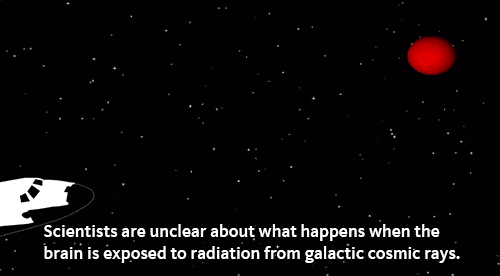
Humans are the product of millions of years of evolution, during which we’ve been forged by evolutionary forces to adapt to a wide range of environments here on Earth. But space? No creature, let alone humans, is made for that (unless you count tardigrades). Even cushioned inside the International Space Station and its life support systems that mimic Earth’s atmosphere, astronauts are exposed to significant health risks — some of which may follow astronauts for the rest of their lives.
According to a new study, prolonged spaceflight may cause some brain damage and accelerate neurodegeneration. This raises yet another challenging concern that may prove to be a major obstacle in the way towards fulfilling our multi-planetary ambitions.
There have been more than 100 astronauts who have visited the International Space Station over the course of its 22-year history. Most have spent more than six months exposed to the effect of microgravity — enough for scientists to understand that the human brain copes poorly to its effects.
Astronauts’ faces often turn red and become bloated, a phenomenon known as the Charlie Brown effect, due to blood and cerebrospinal fluid shifting towards the head. These fluid flow shifts cause space motion sickness (you heard that right), headaches, and nausea. The same mechanism is responsible for building up pressure inside the skull, which may ultimately be responsible for blurred vision.
Microgravity is also known to weaken bones, atrophy muscles, and shorten eyeballs. However, the effects on the brain are the most concerning, and a new study suggests that these consequences may linger for some time.
Researchers at the University of Gothenburg and Ludwig-Maximilians University Munich analyzed blood samples taken from five Russian cosmonauts before and after they completed their six-month mission on the space station. The post-mission blood samples were taken one day, one week, and three weeks after safely landing back on Earth.
Using state-of-the-art molecule array testing, the researchers measured the levels of five important biomarkers for brain health: neurofilament light (NfL), glial fibrillary acidic protein (GFAP), total tau and the amyloid-beta proteins Aβ40 and Aβ42.
The results showed that even three weeks after returning to Earth, the astronauts had elevated levels of NfL, GFAP and Aβ40. High levels of these biomarkers are associated with physical damage to the brain’s connecting fibres, known as axons. In fact, the trends of the biomarkers suggest that different types of functional tissue in the brain are affected by microgravity, the authors reported in the journal JAMA Neurology.
“All relevant tissue types of the brain seem to be affected,” corresponding author Peter zu Eulenburg of Ludwig-Maximilians University Munich told Physics World.
Although this minor brain damage is undeniably connected to spaceflight, scientists don’t know yet what exactly may be causing it. Stressors due to launch and landing, weightlessness, and changes in brain fluid are all viable explanations currently on the table.
What’s certain is that things aren’t looking too bright, especially considering the farther away humans stray from Earth the greater the risks. A 2015 study exposed mice to radiation similar to the cosmic rays that permeate space and found the animals experienced declines in cognition and changes in the structure and integrity of brain nerve cells and synapses (where nerve impulses are sent and received).
Astronauts traveling to Mars would be exposed to cosmic radiation for at least one and a half years. If studies on mice transfer to humans, researchers at the University of California, Irvine, estimated 1 in 5 astronauts on a deep space mission would likely suffer from anxiety; 1 in 3 would be likely to deal with memory issues; and all of them may struggle to make new decisions. Not something you’d like to see in a crew with a bad case of cabin fever trapped in a spaceship.






